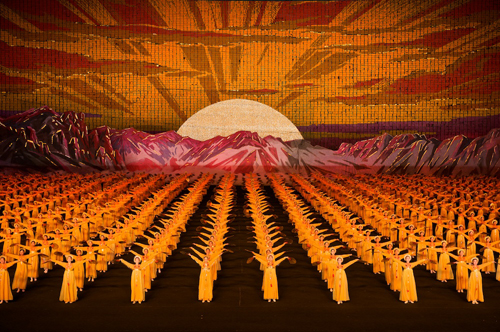| Werner Kranwetvogel | Photographer
Massgames Pictures |
|
> Making of
> About the current series Mass Games: The world’s greatest show > Historical outline > Gymnasts > Backdrop > Music > General Kim Jong Il |

The origins of Mass Games can be considered to lie in the gymnastics movement of the teacher and German nationalist Friedrich Ludwig Jahn (1778-1852) who formed a movement of "patriot gymnasts" in the 19th century. But due to his radical political ideas, his movement was forbidden in 1820 and Jahn was arrested several times in the following years. It took until 1842, that Wilhelm IV. of Prussia lifted the "gymnastic ban", so that the movement could reformate - but Jahn had to drop his political ideas in exchange. A first peak of the new movement was the "Turnfest Leipzig" of 1863 with over 20.000 participants. After WWII several socialist states rediscovered Jahns ideas of a mass gymnastics movement - and again they were loaded with political content: the idea of synchronized movements of the masses matched now perfectly with the political ideas of the ideal society. DPRKs leader Kim Jong Il puts it in an essay on the Mass Games like this: "The schoolchildren, conscious that a single slip in their action may spoil their mass gymnastic performance, make every effort to subordinate all their thoughts and actions to the collective." The individual is only perfect as part of the collective and the collective is only perfect, when each individual is. Mass Games are a means to form "fully developed communist people." (Kim Jong Il, as above.) Today the DPRK is not only the only state, where Mass Games are still performed, but also the place where this socialist extravaganza is brought to such an enormous size that dwarves all other comparable events ever performed. The current show is named "Arirang" after a popular Korean Folk Song, featuring up to 100.000 participants. There are alone 20.000 pupils in the background forming huge displays with their books. North Korean Mass Games are definitely the world's greatest show! Mass Games are composed of three different elements: gymnastics, backdrop, and music. Each of these components is essential for a successful mass gymnastics but they are not identical in their degree of importance. |

|
| > Deutsch
> Disclaimer |